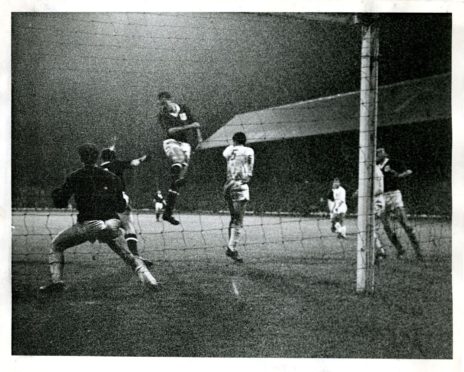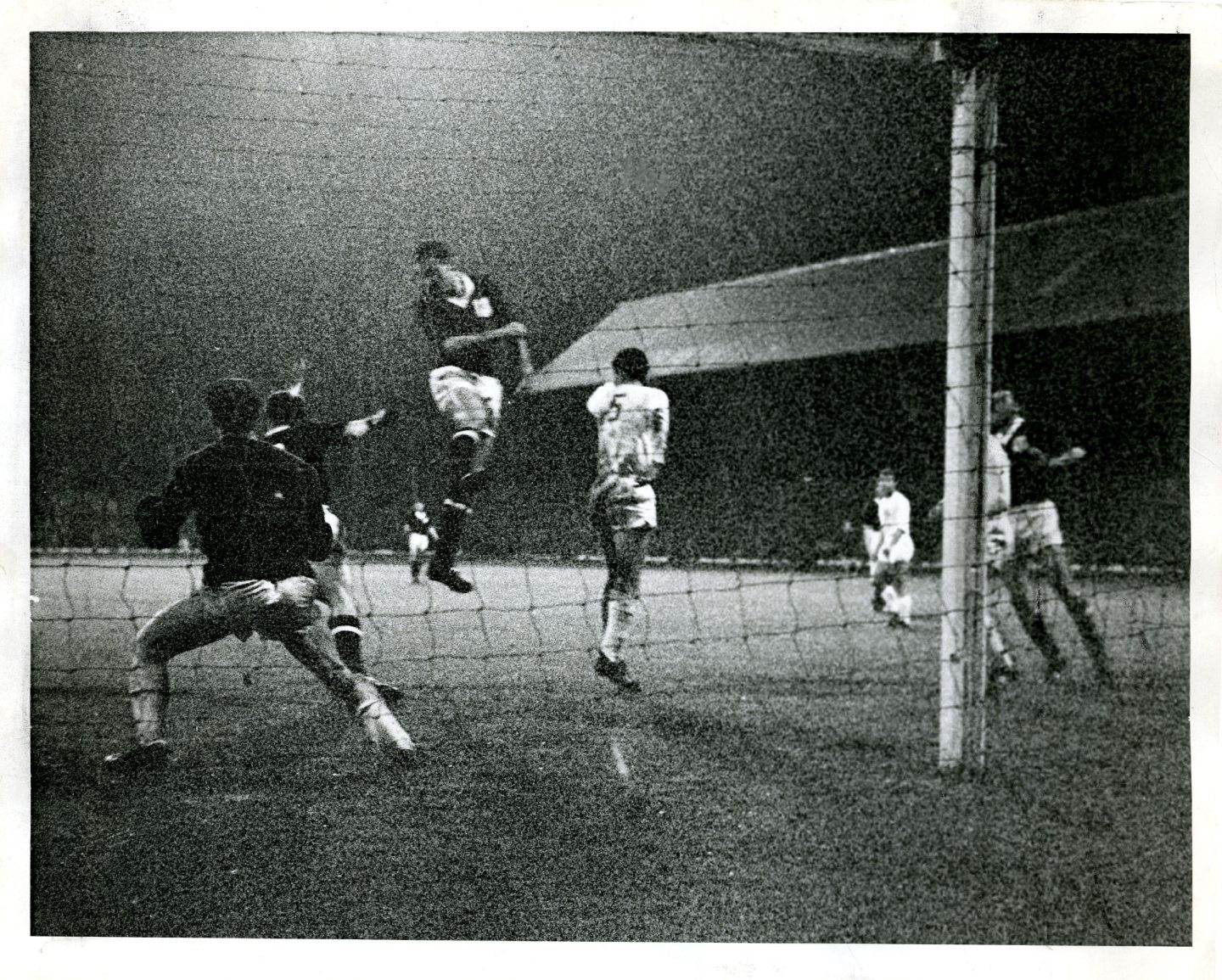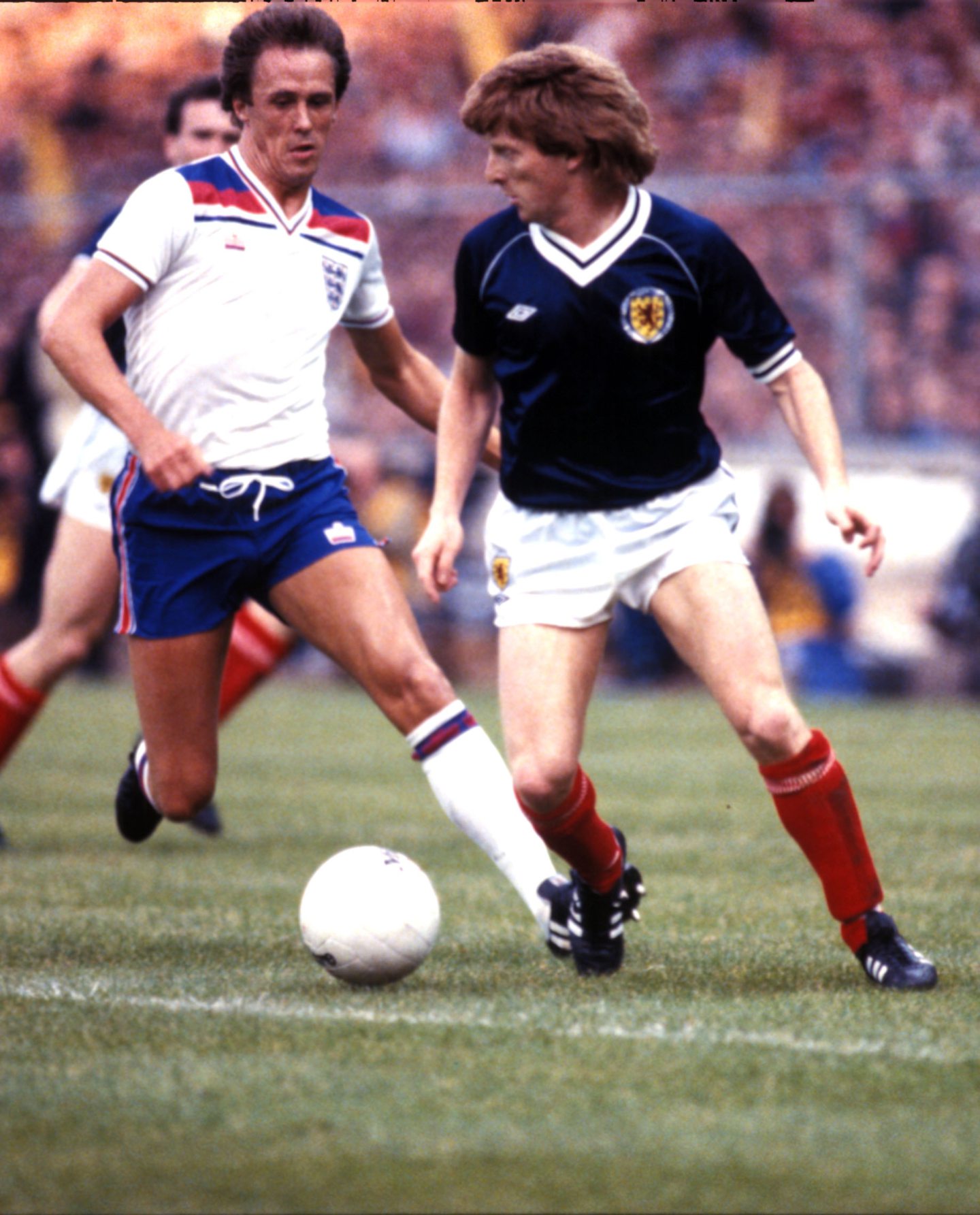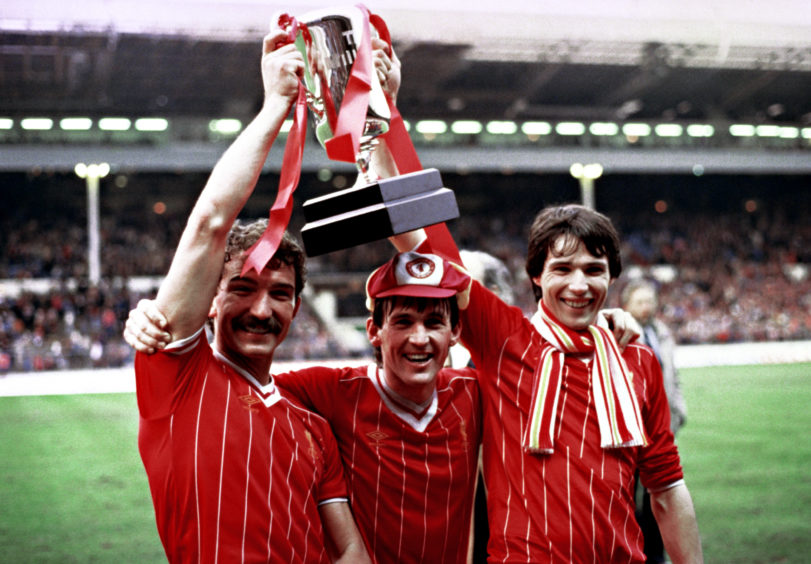Now these photos intrigue me slightly.
The one above was taken just before the start of Dundee FC’s 1962-63 season.
This, of course, was the term after the Dark Blues won the league – and the photo shows the team with the championship trophy.
What it also shows is the Dens Park outfit resplendent in their new-style crew-neck jerseys.
Go, then, to the photo (below), which was taken just a few months later as The Dee kicked off an incredible European Cup run with an astonishing 8-1 home victory over German champions Cologne.
The team are now back in their previous-season V-neck jerseys.
Can any reader give the reason why this change came about?
It would seem the paths of Jim Davie and myself have often crossed.
We were pupils of Balerno Primary School at the same time, then Morgan Academy, and support the same team.
Then we both worked for DC Thomson and, after stints with some magazines, Jim got his dream job on The Courier sports desk, on the other side of the office from me on the Tele.
We are now both retired from full-time employment.
Jim got in touch with a good story.
He said: “Watching a re-run of the 1979 FA Cup Final, in which Arsenal beat Manchester United 3-2, I noticed that the linesman with the red flag was running the line to the left of the team benches in the first half.
“However, in the second half, a different lino was running the line to the right of the team benches.
“The assistant with the red flag had moved to the other side of the pitch and was running the line exactly opposite to where he was in the first half.
“That puzzled me as I’d never seen that before.”
Jim set about getting an answer to this, as he continued: “I posted my query Twitter and the first answer I got was from was from Referee Retrospective, who offered ‘Originally all English referees had to change diagonal for the second half, but that was changed and, by 1979, not so many did so but Ron Challis (the final referee) was one who did.
“The principle reason was to even out wear on each touchline, although some thought it could aid match control.”
Jim then discovered that the lino in question with the red flag was Keith Hackett and that he had a Twitter account, so he messaged him and received an answer.
Jim revealed: “Keith said he remembered dropping it.
“Some referees would run outside-lefts first half and the outside-rights in the second half.
“Now they operate outside-rights in every game.
“Keith refereed the FA Cup Final two years later.
“The other lino in 1979 was a Scotsman, Harry Dempsey of Bishopbriggs.”
I’m assured this story is true . . .
Postponed matches in the English Premier League and FA Cup aren’t that unusual, but consider for a moment just how many times the match between Lincoln City and Coventry City was postponed because of a bad winter in the season of 1962/63.
Due to play each other on January 5, 1963, the fixture between the teams was called off due to inclement weather and scheduled for a few days’ time. Then it was called off again . . . and again . . . and again.
The fixture was called off a total of 15 times before a match was finally played – chalking up 66 days between the start of the “round” and the end of the “round”.
Coventry eventually beat Lincoln City 5-1 on March 6.
Broughty Ferry resident Jackie Knight, a former Scottish Amateur Cup winner, set me a poser.
He asked: “Just prior to signing him, when Liverpool went to watch Northampton Town’s Phil Neal for the final time, what position was he playing in that match?”
After offering that I didn’t have a clue other than right-back, Jackie revealed: “The Northampton goalkeeper was injured and carried off after just 10 minutes.
“Neal went in goal and kept a clean sheet for the remaining 80 minutes.
“Neal holds two Liverpool FC records.
“He won 22 trophies in his time at Anfield – more than any other player.
“From October 23, 1976, to September 24, 1983, he played 417 consecutive games for the Anfield outfit.”
Here are some unusual football facts . . .
1. No Barcelona player had ever been named La Liga player of the month until Neymar was in November 2015.
2. The first British player to win the Champions League (after it was rebranded in 1992) was Paul Lambert in 1997 with Borussia Dortmund.
3. Denmark won the 1992 European Championship after failing to qualify. Yugoslavia were disqualified and the Danish team found out that they would be allowed to participate only 10 days before the start of the tournament.
I’ve come across some tales regarding football referees which I’ll share in the coming weeks.
Gerry Evans was the match official during a Hearts v Rangers encounter from 1996.
West coast bias and Glasgow favouritism are a couple of the criticisms of both the Scottish football press and the referees.
The feeling, in terms of the latter, is not quite as strong as it once was.
In 1996, however . . .
With Hearts trailing at Ibrox, they were reduced to 10 men, as disciplinary tightrope walker Pasquale Bruno was sent off.
No surprise, there. However, the real surprise was yet to come.
In a seven-minute spell, three further players from the away side – David Weir, Neil Pointon and Paul Ritchie – were shown a red card, one receiving a second yellow for kicking a post.
Fans, both home and away, were unhappy.
Rangers player Richard Gough tried to persuade Mr Evans not to produce a fourth red, while Hearts chief executive Chris Robinson came down to the pitch to try and get the away side to walk off.
The game finished 3-0 to Rangers.
Football players, managers and staff are always sought for quotes by the media. I’m continuing to share some of them with you, which are associated with the Scotland international team.
Graeme Souness said of Liverpool and Scotland team-mate Kenny Dalglish:
“I never saw anyone in this country to touch him.
“I can think of only two who could possibly go ahead of him – Pele and possibly Cruyff.”



